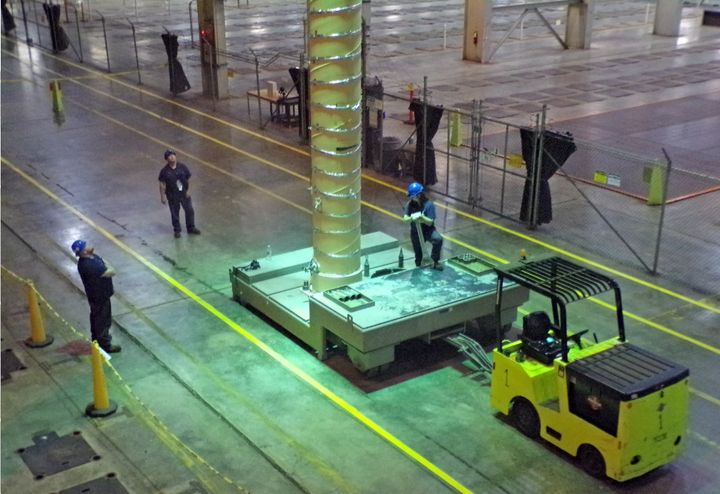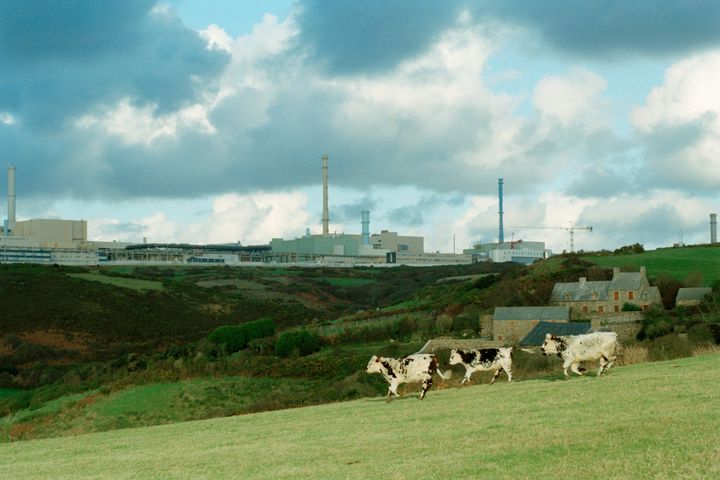
The Biden administration showed up to last month’s global climate summit in Dubai with a radical new plan to replace coal and compete again with Russia and China over a technology American scientists pioneered.
The United States led nearly two dozen other nations in a pledge to triple the world’s supply of nuclear power by 2050. While most of the reactors under construction in other countries today are Russian models, the U.S. promoted its growing slate of high-tech startups with cutting-edge reactor designs as an American alternative to working with the Kremlin.
The big problem with that pitch? The small, next-generation nuclear reactors companies like the one billionaire Bill Gates backs are designed to run on a potent but rare type of uranium fuel with only one commercial supplier on the market: the Russian government.
Last autumn, a facility in Ohio began the nation’s first domestic production of what’s called high-assay low-enriched uranium, or HALEU (pronounced HAY-loo). But it’s still at a small scale.
Now the Biden administration is trying to entice more companies into the market.
On Tuesday, the Department of Energy offered private companies a minimum of $2 million each to start producing HALEU domestically, the second part of a $500 million tranche of federal dollars for nuclear fuel production from President Joe Biden’s climate-spending law, the Inflation Reduction Act. The agency announced the first for a separate part of the HALEU-making process in November.
“Boosting our domestic uranium supply won’t just advance President Biden’s historic climate agenda,” Ali Zaidi, Biden’s national climate adviser, said in a statement, “but also increase America’s energy security, create good-paying union jobs, and strengthen our economic competitiveness.”

All 93 atom-splitting machines operating at U.S. power plants today are conventional light-water reactors based on the technology first commercialized in the 1950s to harness the tremendous heat released from fission reactions to boil water that makes steam that spins turbines to generate huge volumes of nonstop zero-carbon electricity.
Light-water reactors are only built to handle fuel made from uranium enriched up to 5% using high-speed gas centrifuges into the unstable uranium-235 isotope needed for a sustained fission reaction. Many of the “advanced” reactors now vying for regulatory approval in the U.S. are instead designed to handle fuel enriched up to 20%, meaning the technology uses four times as much of the energy per unit of uranium as the traditional variety.
While the U.S. and its allies levied unprecedented sanctions on Russia’s oil, gas and mining companies after the 2022 invasion of Ukraine, Moscow’s state-owned Rosatom remains immune as the fourth-largest source of traditional fuel imports for American utilities.
That may not be true forever. The Republican-controlled House of Representatives last month passed legislation calling on the U.S. to ban imports of Russian uranium.
The U.S. used to produce most of its own reactor fuel. As part of the 1990s, a Clinton-era deal encouraged the struggling post-Soviet Russia to dismantle its nuclear weapons, however, the U.S. agreed to buy any reactor fuel made from weapons. The cheap supply of Russian fuel put U.S. enrichers out of business, with the last facility closing down a decade ago.
Existing reactors have alternatives to Russia.
Canada, Kazakhstan and Australia ― the top three suppliers of uranium to the U.S., respectively ― are all looking to increase mining. France’s state-owned uranium company, Orano, announced plans in October to increase enriched fuel production by 30%. Three new uranium mines entered into production in Arizona and Utah in just the past few months.
But next-generation reactors that need HALEU suffer from a classic chicken-versus-egg problem. Who can confidently invest in building a first-of-a-kind reactor that needs Russian fuel while the U.S. is trading barbs with Moscow? Who can confidently invest in enriching fuel for reactors that don’t currently exist and are not yet even licensed in the U.S.?
The federal government is providing an answer to both by pumping billions into propping up advanced reactors and fuel production in hopes they can advance simultaneously in time for the projected start of the new nuclear rollout at the start of the 2030s.
But Edward McGinnis, who spent 30 years working on nuclear power at the Energy Department before becoming the chief executive of the fuel-recycling startup Curio, said the Biden administration is overlooking a vital potential source of HALEU: nuclear waste.

The spent rods of uranium pellets that come out of traditional reactors after a two-year fuel cycle still contain as much as 97% of their energy ― which is why the material remains dangerously radioactive for so long. Companies like Curio want to use special tools to separate all the different radioactive isotopes out of nuclear waste, dramatically reducing how much toxic material needs to be stored long term and increasing the domestic supply of reactor fuel.
Recycling nuclear waste is a complicated process that the U.S. government feared in the 1970s would increase the supply of radioactive materials for weapons, banning the nation’s first facility from opening. France, Russia and Japan all built plants to reprocess uranium fuel. While the U.S. lifted its ban on nuclear recycling in 2005, no company has yet made a serious attempt to build a new facility.
The IRA legislation that provided the new funding for HALEU production did not include recycling nuclear waste.
The draft letter of the Energy Department’s latest request for proposals for enriching HALEU states on page 8 that the uranium used to make the fuel “must have been mined and converted, and not come from a source that was recycled or reprocessed.”
“Some people don’t realize when we’re saying we need to support HALEU that recycling can be one of the two solid legs of our future nuclear fuel domestic production capability,” McGinnis said by phone Tuesday.
The main federal effort for funding nuclear waste recycling is the Energy Department’s experimental ARPA-E program, which in 2022 gave out $38 million to companies and laboratories for research, including $5 million to Curio.
Rep. Chuck Fleischmann (R-Tenn.), who chairs the House’s appropriations subcommittee on water and energy, tacked $15 million for reprocessing uranium fuel onto the latest federal budget proposal to help companies advance beyond the research phase into licensing and locating an actual plant.
McGinnis said the U.S. hasn’t even considered spending that kind of money deploying nuclear waste recycling in at least 15 years. He called on the Senate and White House to champion the measure in budget talks.
“You’re not only complementing the traditional uranium mining, you’re also, by extracting from our so-called nuclear waste, solving to a large degree the nuclear waste problem at the same time,” he said. “It’s a win-win.”
Disclaimer: The copyright of this article belongs to the original author. Reposting this article is solely for the purpose of information dissemination and does not constitute any investment advice. If there is any infringement, please contact us immediately. We will make corrections or deletions as necessary. Thank you.
